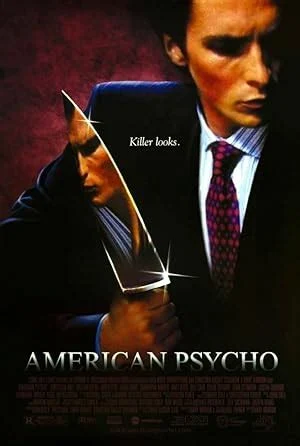Introduction
“American
Psycho,” directed by Mary Harron and based on Bret Easton Ellis’s novel, is a
psychological thriller that delves into the mind of Patrick Bateman, a wealthy
investment banker with a dark, violent side. Released in 2000, the film has
since become a cult classic, known for its satirical take on the 1980s yuppie
culture and its ambiguous, thought-provoking ending. In this blog post, we will
explore the plot of “American Psycho” and discuss the various interpretations
of its ending.
Plot
Summary
“American
Psycho” follows Patrick Bateman, a successful and charming Wall Street banker
who leads a double life as a serial killer. The film portrays Bateman’s descent
into madness as he commits increasingly brutal and grotesque acts of violence.
Despite his heinous crimes, Bateman manages to maintain his facade of normalcy,
blending seamlessly into the superficial and materialistic world of 1980s New
York City.
Bateman’s
life is characterized by his obsession with appearances and status. He
meticulously maintains his physique, wardrobe, and social standing, all while
harboring a deep-seated rage and desire for violence. The film opens with
Bateman’s daily routine, highlighting his superficial lifestyle and the
emptiness that pervades his existence.
As
the story progresses, Bateman’s violent tendencies become more pronounced. He
murders a homeless man, kills a colleague named Paul Allen, and engages in
increasingly depraved acts. Despite his growing body count, Bateman’s actions
go unnoticed by those around him, underscoring the film’s critique of the
superficial and indifferent society he inhabits.
Key
Themes
- Materialism
and Superficiality: The film critiques the shallow and
consumer-driven culture of the 1980s, highlighting the emptiness and moral
decay of the yuppie lifestyle. Bateman’s obsession with material
possessions and status symbols reflects the era’s emphasis on wealth and
appearance over substance and morality.
- Identity
and Isolation: Bateman’s struggle with his identity and
his sense of isolation are central to the narrative. His violent acts can
be seen as a manifestation of his inner turmoil and desire for control.
Despite his outward success, Bateman is profoundly disconnected from those
around him, unable to form genuine human connections.
- Unreliable
Narrator:
The film’s narrative is intentionally ambiguous, leaving viewers
questioning the reality of Bateman’s actions and the extent of his
psychosis. This ambiguity is a key element of the story, forcing viewers
to grapple with the uncertainty of Bateman’s reality.
Ending
Explained
The
ending of “American Psycho” is one of the most debated aspects of the film.
Here are some of the prominent theories:
Theory
1: It Was All in His Head
One
interpretation suggests that Bateman’s violent acts were merely fantasies, a
product of his disturbed mind. This theory is supported by the inconsistencies
in Bateman’s narrative and the surreal nature of some of the scenes. For
example, Bateman’s confession to his lawyer is dismissed as a joke, and the
lawyer claims that Paul Allen, one of Bateman’s supposed victims, is still
alive.
This
theory posits that Bateman’s actions are a manifestation of his inner desires
and frustrations, rather than actual events. The film’s surreal and disjointed
narrative supports this interpretation, as does the lack of concrete evidence
for Bateman’s crimes. If Bateman’s actions are indeed fantasies, it raises
questions about his mental state and the nature of his psychosis.
Theory
2: A Critique of Society
Another
theory posits that the film’s ending is a critique of the indifference and
moral bankruptcy of society. Bateman’s confession is ignored, and his
colleagues remain oblivious to his crimes, reflecting the apathy and
superficiality of the world he inhabits. This interpretation aligns with the
film’s themes of materialism and the dehumanizing effects of capitalism.
In
this view, Bateman’s actions are real, but society’s indifference allows him to
continue his violent spree unchecked. The film’s portrayal of the 1980s yuppie
culture underscores this critique, highlighting the moral decay and lack of
accountability that pervades Bateman’s world. The ending serves as a commentary
on the failure of society to recognize and address the darkness within its
midst.
Theory
3: Bateman’s Descent into Madness
Some
viewers believe that the ending represents Bateman’s complete descent into
madness. His inability to distinguish between reality and fantasy culminates in
his confession, which is met with disbelief and indifference. This theory
emphasizes the psychological aspects of the film, portraying Bateman as a
deeply disturbed individual whose grip on reality has completely unraveled.
This
interpretation suggests that Bateman’s actions are a mix of real and imagined
events, reflecting his deteriorating mental state. The film’s ambiguous
narrative supports this view, as does Bateman’s increasing paranoia and
confusion. The ending, in this context, is a reflection of Bateman’s fractured
psyche and the ultimate collapse of his sense of self.
Conclusion
“American
Psycho” is a complex and thought-provoking film that leaves much to
interpretation. Its ambiguous ending invites viewers to question the nature of
reality and the extent of Bateman’s crimes. Whether seen as a critique of
society, a portrayal of a disturbed mind, or a combination of both, “American
Psycho” continues to captivate and provoke discussion.
The
film’s enduring appeal lies in its ability to challenge viewers and provoke
thought. Its exploration of themes such as materialism, identity, and the
nature of reality resonates with audiences, making it a timeless piece of
cinema. As we continue to grapple with the questions raised by “American
Psycho,” the film remains a powerful commentary on the human condition and the
darkness that lies within.

